When hope becomes a four-letter word: What’s missing from today’s TV shows that deal with race
Editor’s Note: Watch “See It Loud: The History of Black Television,” tonight at 9 p.m. ET on CNN. The five-part series runs through August 6.
Shag carpeting. Eight-track tapes. Missing an important phone call because you weren’t home to hear the phone ring.
There are few anachronisms from the 1970s that most Americans from that era will not miss. It was a time of long gas station lines, itchy polyester double-knit suits and TV options limited to three networks that signed off each night with a warbled recording of the Star-Spangled Banner.
But as a Black child of the 1970s who grew up on shows such as “The Jeffersons,” I miss one storytelling element from that era that seems to be missing from contemporary Black TV series: hope. Not a naïve hope, but a muscular type of hope that maintained that though racism was persistent, America would eventually transcend its racial divisions.
Watching clips from popular 1970s shows like “Room 222” and “The White Shadow” is like stepping into an alternative universe. White and non-White characters tackled racial issues with a boldness and nuance that wouldn’t be allowed today. They strived together to create integrated neighborhoods and schools. They thought people could change, and so could America.
“There was this moment of hope in America where we actually believed that we could confront and deal with centuries-long problems of race, gender and class,” says Rodney Coates, a sociologist, poet and professor of critical race and ethnic studies at Miami University in Ohio.
“They weren’t stuck in fatalism,” Coates says of ’70s shows that addressed race or featured mostly Black casts. “They weren’t stuck in the notion of it’s always been this way, and we can’t change it.”
I bring up Black TV shows from the 1970s because I’ve been told my nostalgia is misplaced. In recent years, many cultural critics have claimed we are in a new “golden age of Black television.” They say there’s been a renaissance in Black TV, driven by a new wave of Black creators who are finding fresh ways to explore the Black experience.
Yet to me and some scholars, critics and TV producers, something is missing. Some recent shows confuse hopelessness with being authentically Black. Others display what one scholar calls an “apolitical multiculturalism”— they feature Black and brown actors but rarely explore their characters’ race or ethnicity.
And few share the tone of their 1970s predecessors — there’s little of the “enduring optimism” reflected in “Movin’ On Up,” the “Jeffersons’” theme song, which became an aspirational anthem for Black America.
Some say TV is ‘Blacker and bolder’ than ever
At first glance, it’s hard to argue against this being a new golden era for Black television. I’ve praised this era myself. I once insisted that the “the most eye-popping elements in a recent wave of sci-fi and horror TV shows featuring Black actors are not the special effects and supernatural creatures, but the multiracial casts and casual acceptance of racial differences.”
There also are more Black creators in television today, including producer Shonda Rhimes (“Bridgerton,” “How to Get Away with Murder”) Donald Glover (“Atlanta”) and Quinta Brunson (“Abbott Elementary”).
Back in the 1970s, virtually all of the Black-themed shows were created or co-created by White men like Norman Lear, the legendary television producer and screenwriter behind such shows as “Good Times,” “The Jeffersons” and “Sanford and Son.”
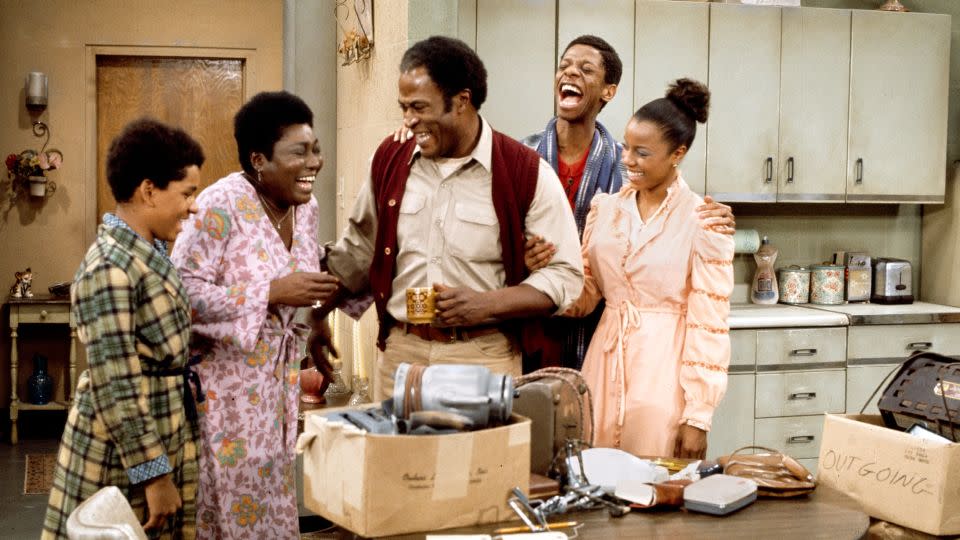
And truth be told, some of those old shows relied on racial stereotypes. Actor Jimmie Walker’s J.J. character in “Good Times” strayed into the buffoonery zone with his incessant catchphrase, “Dyn-o-mite!”
Eric Deggans, a TV critic, said last year that some of the Black sitcoms from that era unintentionally made living in impoverished areas “look livable and even fun, as opposed to the issues that they (Black people) really faced.”
Contemporary Black TV shows rarely make those mistakes, some TV critics say.
“Today, Black shows are more authentically Black and bolder,” says Jeffrey Wray, a director, producer and actor. Wray says an all-White writing room telling stories about Black people is now looked on with suspicion. He points to the success of success of HBO’s “Insecure,” a critically acclaimed drama starting Issa Rae about the friendship between two contemporary Black women.
“Insecure’ was clearly Black and female in spirit, tone, story and execution, and the writers, producers and behind-the-scenes team was made up almost exclusively of Black and Brown creatives,” says Wray, who is also a film studies professor at Michigan State University.
Why being hopeless is not the same as being Black
And yet there is a part of me that now wonders if the contemporary Black shows are as Black and bold as they claim to be, and if some are being too casual about the acceptance of racial differences.
Consider the frequently misunderstood word: hope. I, along with some other TV critics and writers, don’t see a lot of it in contemporary Black shows. “Abbott Elementary,” which follows a dedicated group of teachers valiantly trying to reach students at an underfunded public school, expresses some of that hope.
But “Abbott’s” optimistic tone is an exception and not the norm for popular, Black-themed TV shows in recent years, several TV critics and scholars I talked to say. Hope has become just another four-letter word for a lot of contemporary shows that deal with race.
One critic cited a Black-themed show that set the tone for contemporary TV series that address race: “The Wire.”
The creators of the acclaimed HBO series, about the interplay between a colorful group of criminals, police officers and politicians in an inner-city neighborhood in West Baltimore, is widely considered one of the most realistic portrayals of Black life ever put on TV. Still, few if any of the Black characters in “The Wire” ever really escape the city’s cycle of crime, violence and corruption.
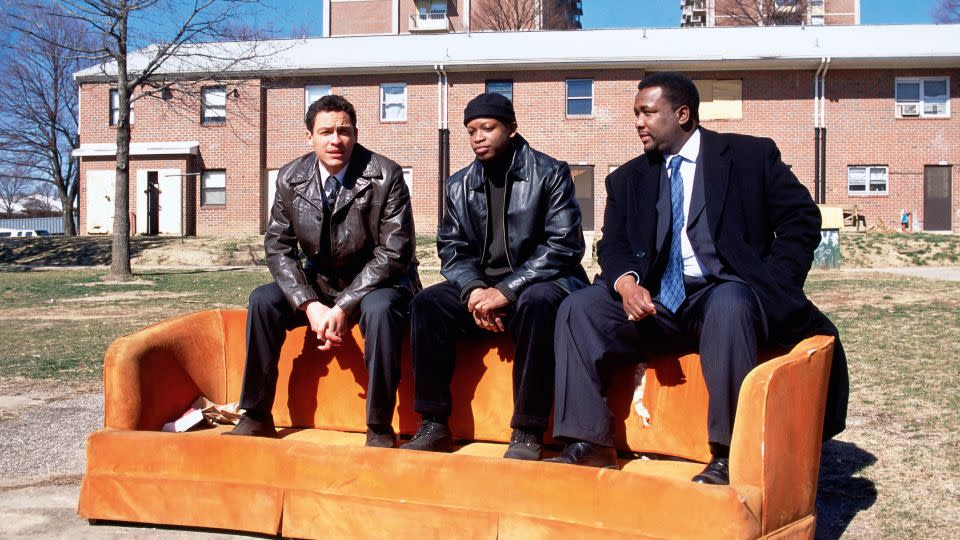
This pessimism was baked into the show from the very beginning. David Simon, the show’s creator, once described the series’ storytelling philosophy: “This is going to be a cruel world and nothing is going to get fixed that matters systematically.”
As someone who grew up in the neighborhood where “The Wire” was set, I’ve frequently written about how the show unintentionally sent this message: The only authentic Black story about race is a hopeless one.
Coates, the critical race studies professor, says “The Wire” set the tone for contemporary shows that address race or feature Black casts.
“Part of the problem is that there is way too much time spent ‘rediscovering’ the problems — police brutality, addiction, abuse — and too little time experiencing the solutions, the victories, the success stories,” Coates says.
Such TV series ignore the rich tradition in the Black community of embracing a certain type of hope. Not the Hallmark-card kind of naïve hope, but something sturdier.
It’s the hope that enabled enslaved Africans to survive the Middle Passage and the barbarity of slavery; the hope reflected in the negro spirituals that still move people around the globe; the hope that columnist E.J. Dionne Jr. — paraphrasing former President Barack Obama — described in a recent column as a “demanding virtue, not a sunny disposition.”
“It accepts reality, acknowledges obstacles and insists,” Dionne wrote, “as the bard of hope Barack Obama put it, ‘that something better awaits us if we have the courage to reach for it and to work for it and to fight for it.’ ”
TV in the 1970s showed glimpses of a more promising tomorrow
This is the hope I saw in Black-themed shows of the 1970s, as well as another popular show whose creators demanded that its cast and neighborhood setting be racially integrated: “Sesame Street.” Others saw this hope reflected in ‘90s Black sitcoms like “Martin” and “The Fresh Prince of Bel-Air.”
One of my favorite shows from the 1970s was “Room 222.” The series followed Pete Dixon, an idealistic and impossibly suave Black history teacher played by Lloyd Haynes. Dixon taught lessons in tolerance at an integrated public high school in Los Angeles, where he and other educators often debated issues like racism, sexism and homophobia.
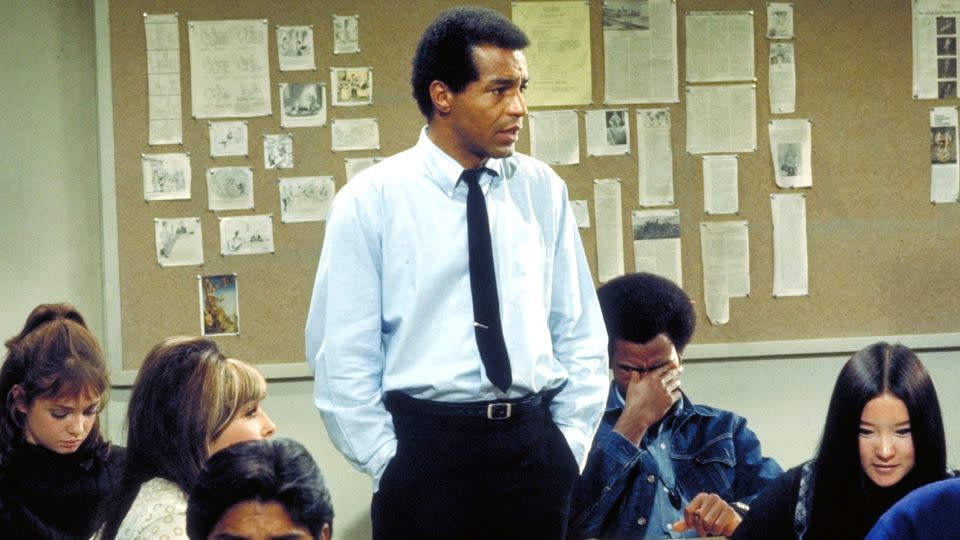
I still occasionally watch the opening credits montage of “Room 222” for an injection of hope. It depicts smiling Black, White, and Asian students strolling happily through a sun-dappled campus on their way to morning class. As a kid who grew up in racially segregated public schools (there was only one White student in my Baltimore high school), I was fascinated watching this preview of what this country could be.
So was Billy Ingram, an author and creator of the entertainment website TVparty!. He wrote a 2013 essay in which he said “Room 222” may be even more enjoyable to watch today.
“The [“Room 222”] storylines provided a fascinating glimpse at a moment in history where society was rapidly evolving toward a promising tomorrow—that’s what we thought anyway,” he wrote.
When “Room 222” aired, from 1969 to 1974, Ingram was growing up in a racially segregated Greensboro, North Carolina, living with parents who opposed integration. Public schools were just starting to desegregate, and tensions were running high. For him, seeing White and non-White actors on “Room 222” work out racial issues and earnestly strive to live together was a revelation.
“It introduced me to ideas and thoughts that had not occurred to me,” Ingram says. “The country as a whole was making tremendous progress. It felt like we were coming together.”
Ingram’s nostalgia for the early ‘70s may seem odd to those who remember that era. The 1973 oil embargo sent shockwaves through the US economy. The US military was humbled by losing the Vietnam War. And that idyllic “Room 222” opening? White parents in cities like Boston were watching another channel. They staged angry protests against desegregating schools.
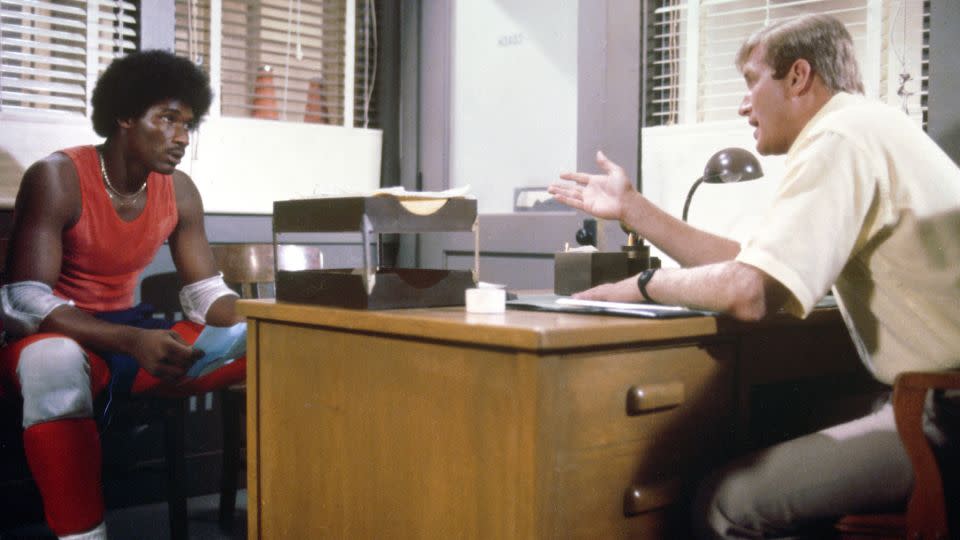
And yet the mood in the Black community during that time was filled with hope. The Black middle class was expanding as Black political power grew in Congress and in big cities across America. It was a time of swelling Black pride — every home’s coffee table seemed to have copies of Ebony and Jet magazine.
I recall watching my older brother Twiggy become the first one in our family to graduate from college. He took me with him when he bought his first suit and his first house, and he gave me the first ride in his new, sky-blue, pine-scented 1975 Pontiac Firebird.
It felt like Black people, to paraphrase “The Jeffersons’” theme song, were finally getting “a piece of the pie.”
TV series’ attitudes toward racism have changed
Some of this hope couldn’t help spill into shows that depicted Black people in the 1970s.
There was a belief implicit in many of these shows that some critics say doesn’t exist anymore on TV — that it is worth reaching out to White people who hold racist beliefs.
Jim Hope, a three-time Emmy-nominated writer and producer, says shows like ‘Good Times,” “All in the Family” and “The Jeffersons” were effective in addressing racism because their writers seemed to prioritize changing people’s minds.
That idealism was reflected in the treatment of the most famous bigot from the 1970s: Archie Bunker of “All in the Family,” Hope says. Bunker, played by the actor Carroll O’Connor, constantly argued with his liberal son-law Michael Stivic (played by Rob Reiner). Their debates provided both laughs and racial commentary.
“Mike’s goal wasn’t to demonize Archie, but to get him to repent,” says Hope, an assistant professor of writing for film and television at Biola University in California. “Most people agree that a show like ‘All in the Family’ couldn’t possibly be made today. Most likely because the racist’s repentance is immaterial to us now.”
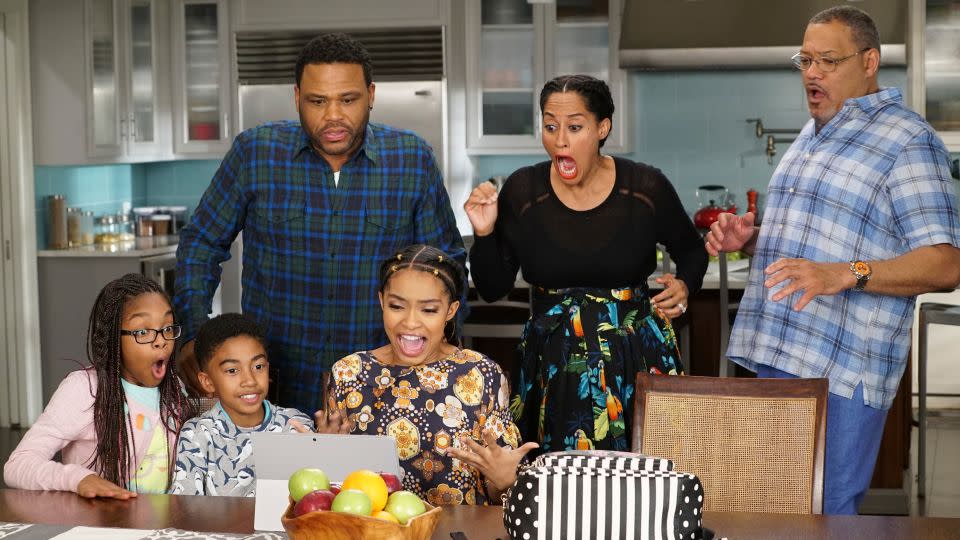
Hope cites a recent popular Black show, “Black-ish,” which ended last year after eight seasons. He doesn’t begrudge the show’s attempt to address racism, which he says is needed. But Hope says the show didn’t give any complexity to its White characters.
“The White characters in ‘Black-ish are there to be pounded on — look at how dumb they are, see how they’re wrong,” Hope says.
Some might say that any White person who expresses racism deserves to be pounded on. But moral indignation doesn’t necessarily make for good storytelling, says Coates, the poet and sociologist at Miami University.
“I don’t believe in talking down to people, and that’s what I get from some of what we’re seeing now,” Coates says about some contemporary, Black-themed TV shows. “It becomes preachy. You’re putting people in a box and you’re not recognizing that people are multilayered and complex. Archie [Bunker] had racist tendencies, but he had a heart of gold at the same time.”
A classic 1970s scene about racism would likely not air today
Here’s another word to consider when contrasting then and now in Black television: boldness.
Are Black TV shows bolder today? I’m not so sure, at least when it comes to addressing race. I spoke to several television critics who share the same doubt, and they all point to one episode from 1974: a classic scene involving one of the most famous Black characters from that era, George Jefferson.
In an “All In The Family” episode which helped set up “The Jeffersons” spinoff, Jefferson and Bunker attend an engagement party for Jefferson’s son, Lionel (played by actor Mike Evans). Both men are horrified to discover that Lionel’s in-laws are a White man and a Black woman.
Jefferson greets the couple by staring the father and declaring with open disgust, “You’re White!”
As Jefferson becomes more agitated, he blurts out the the “n-word,” prompting Bunker to dryly reply: “I ain’t used that word in three years.”
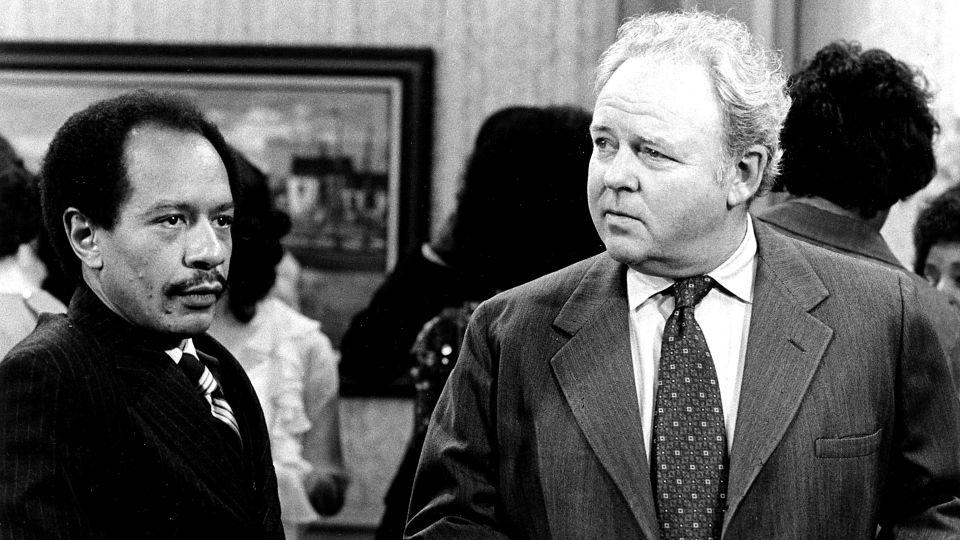
The scene ends with “Weezy” (Jefferson’s wife, played by actress Isabel Sanford) dancing with her son’s White father-in-law as Jefferson and Bunker hoist drinks at the bar.
“Bunker, what is this world coming to?” Jefferson asks as both dumbfounded men watch the old rules about race collapse before their eyes.
That scene is top-level storytelling. The writers dared to draw a moral equivalence between Bunker’s racism and Jefferson’s intolerance. This was in an era before social media, where any sense of nuance gets lost when internet mobs mobilize to get people fired for any comment deemed racially insensitive.
For those who say Black TV is bolder now, I ask:
Could that scene with George Jefferson and Archie Bunker appear on TV today?
What happened to the racial optimism of the 1970s?
Like many TV shows, that kind of muscular hope eventually got canceled. The reasons are complex. The “war on drugs” that began in the 1970s led to mass incarceration of Black Men. “White flight” doomed integration efforts in many schools and neighborhoods. “Hope and change” and “Yes, we can!” were followed by “Make America Great Again” and the Jan. 6 insurrection.
School segregation has now returned to 1968 levels, even though the US has become more racially diverse.
The racial and political divisions in the US are now so deep that some say we are in the throes of a “cold civil war” with more Americans regarding each other as enemies, not as fellow citizens.
The interracial harmony depicted in the opening montage of “Room 222” now seems like a fairytale. These shifts in attitudes invariably seep into contemporary Black shows.
TV shows respond to these changes in different ways. Some simply ignore White people, with a hyper-focus on Black characters who expend little energy trying to include White viewpoints. I understand that impulse. It can be tiring trying to explain yourself to White people if you’re Black.
Others do something that’s more disturbing. They present White and non-Whites blissfully coexisting in neighborhoods and schools — with no hint at the struggles involved in creating that kind of integrated world.
The scholar Makeba Lavan calls this “apolitical multiculturalism.”
Contemporary TV may be populated by more Black and brown faces, but the race and ethnicity of those characters are not deeply explored, Lavan says. Interracial couples, for example, are often shown on TV but shows don’t explore their ethnic backgrounds, she says.
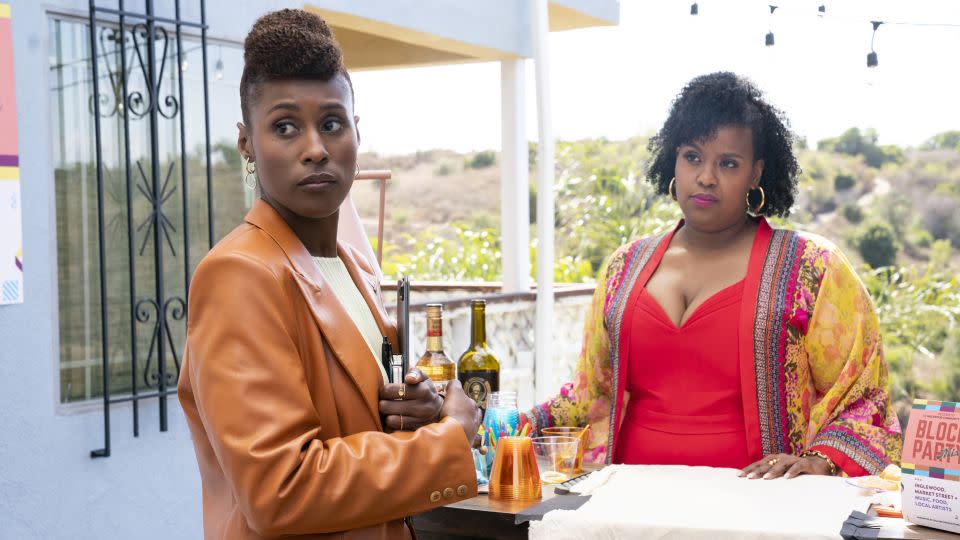
“Despite shows like ‘Abbott Elementary,’ ‘Insecure,” and ‘Grand Crew,’ a type of apolitical multiculturalism dominates our media landscape,” says Lavan, an assistant professor at Grinnell College in Iowa who specializes in Afrofuturism, speculative fiction and pop culture.
“The cultural background of the character is not taken into account at all,” Lavan says. “It is a part written for a White person. It becomes a form of ventriloquism.”
One prime example of apolitical multiculturalism was “Sleepy Hollow,” a horror show with a racially mixed cast that was canceled after four seasons, Lavan says. It had a leading Black woman (Nicole Beharie) and a leading White man (Tom Mison) who had “amazing chemistry,” but the show’s diverse cast seemed like it was only a hook for viewers, Lavan says.
Is change possible without hope?
Maybe hope is overrated. Maybe being bold and Black today is choosing not to accommodate White points of view. And maybe the promising tomorrow that shows like “Room 222” depicted never had a chance anyway.
Still, when I consider the necessity of hope, I think of something the author Rebecca Solnit once wrote. She said “action without hope is impossible.”
“Your opponents would love you to believe that it’s hopeless, that you have no power, that there’s no reason to act, that you can’t win,” Solnit wrote in her book, “Hope in the Dark: The Untold History of People Power.” “Hope is a gift you don’t have to surrender, a power you don’t have to throw away.”
I know that every generation complains that things ain’t what they used to be. I also get why some people roll their eyes at that kind of nostalgia. Whenever I see snippets from Black-themed shows of the 1970s, I also wince at the outdated slang and the JC Penney furniture, and I marvel that people once functioned without smartphones.
But when it comes to the muscular hope that pervaded those 1970s shows — the belief that something better awaits us tomorrow if we have the courage to fight for it together — well, that kind of rerun never gets old for me.
John Blake is a Senior Writer at CNN and the author of “More Than I Imagined: What a Black Man Discovered About the White Mother He Never Knew.”
For more CNN news and newsletters create an account at CNN.com

